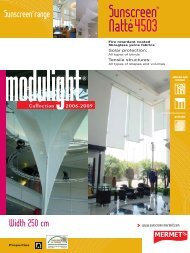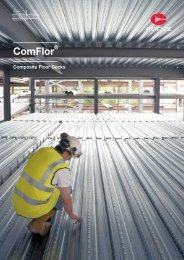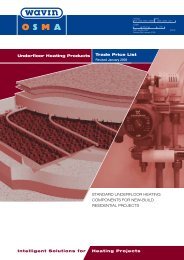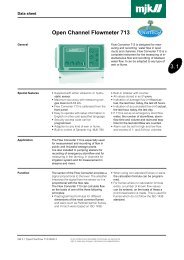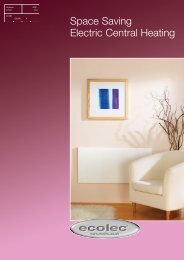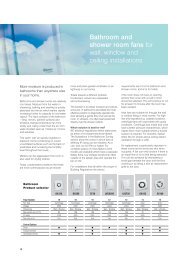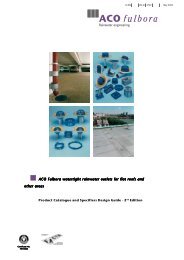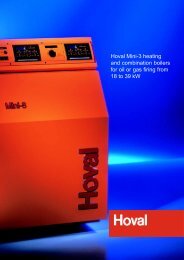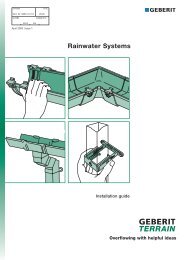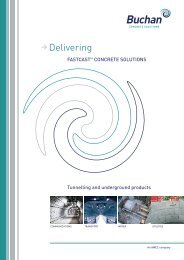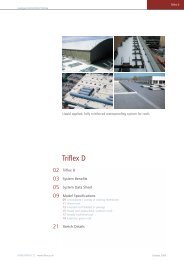You also want an ePaper? Increase the reach of your titles
YUMPU automatically turns print PDFs into web optimized ePapers that Google loves.
Gabion Filling Materials<br />
The design of gabion retaining walls is based on the mass of the contained stone or rock<br />
being able to resist the disturbing forces due to soil and external loadings. The design<br />
does not consider that the gabion mesh provides improvement to stability. The design<br />
code applicable to gabions is BS 8002 - The Code of Conduct for Earth Retaining Structures.<br />
In the design of the retaining structure, the principles are the same for both woven and<br />
welded mesh gabions. Where walls are subject to possible settlement, woven mesh<br />
gabions have more flexibility and therefore may be best suited in these situations. Where a<br />
high quality of appearance is needed, welded gabions are superior providing that the<br />
correct selection of mesh wire combinations are chosen.<br />
The selection of rock or stone fill is very important, as the performance of gabion<br />
structures is dependant upon the mass. Although the mass is the criteria for design, other<br />
factors to be considered are:-<br />
Grading of fill<br />
Gabion fill is normally a graded fill of between 100 to 200mm in diameter <strong>with</strong> a<br />
nominal 6% smaller or larger.<br />
The grading can be tightened to 80 to 150mm providing the control of the grading is<br />
tight. Stones smaller than the mesh will not be contained by it.<br />
The grading is important to ensure that voids <strong>with</strong>in the unit are minimised<br />
otherwise settlements can occur.<br />
Angularity of fill<br />
The more angular the fill, the better interlock and the less deformation of the face<br />
occurs.<br />
Rounded stone has little interlock and results in greater deformation of the face. To<br />
overcome the deformation, a heavier mesh wire should be used.<br />
Welded mesh gabions are manufactured from 3, 4, or 5mm wire diameters and<br />
Woven gabions from a wire diameter of 2.7mm. Therefore for a rounded stone fill,<br />
welded wire mesh gabions should be specified, 4mm for gabion 27 system and<br />
5mm for standard gabion 39 system.<br />
Crushed concrete or gritstone, although angular, tend to become rounded. They<br />
do have greater interlock than rounded stones and therefore 4mm welded wire<br />
mesh should be specified<br />
Quarried stone which is normally angular, is the preferable fill as the interlock is<br />
very good.<br />
Blocky stone or flat stone when machined filled can result in large voids being<br />
present which can result in settlements. Care should be taken when machine filling<br />
to minimise large voids.<br />
Ideally, all gabions should be fair faced (hand packed on the exposed faces). Where the<br />
cost of quarried rock fill is high, the gabions can be filled <strong>with</strong> 2 types of fill, a quarried rock<br />
or block stone for the exposed face <strong>with</strong> a cheaper stone fill behind. To assist in placing of<br />
differing fills, an additional cell can be incorporated normally set back 300mm from the<br />
face during gabion manufacture to assist in the construction.<br />
6



